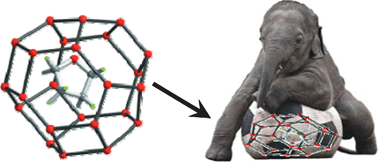Pressure-amorphized cubic structure II clathrate hydrate: crystallization in slow motion
Abstract
A range of techniques has so far been employed for producing amorphous aqueous solutions. In case of aqueous

* Corresponding authors
a Institute of General, Inorganic and Theoretical Chemistry, University of Innsbruck, Innrain 52a, A-6020 Innsbruck, Austria
b Institute of Mineralogy and Petrography, University of Innsbruck, Innrain 52, A-6020 Innsbruck, Austria
c
Institute of Physical Chemistry, University of Innsbruck, Innrain 52a, A-6020 Innsbruck, Austria
E-mail:
thomas.loerting@uibk.ac.at
Fax: +43 512-507-2925
A range of techniques has so far been employed for producing amorphous aqueous solutions. In case of aqueous

 Please wait while we load your content...
Something went wrong. Try again?
Please wait while we load your content...
Something went wrong. Try again?
M. Bauer, D. M. Többens, E. Mayer and T. Loerting, Phys. Chem. Chem. Phys., 2011, 13, 2167 DOI: 10.1039/C0CP01351J
To request permission to reproduce material from this article, please go to the Copyright Clearance Center request page.
If you are an author contributing to an RSC publication, you do not need to request permission provided correct acknowledgement is given.
If you are the author of this article, you do not need to request permission to reproduce figures and diagrams provided correct acknowledgement is given. If you want to reproduce the whole article in a third-party publication (excluding your thesis/dissertation for which permission is not required) please go to the Copyright Clearance Center request page.
Read more about how to correctly acknowledge RSC content.
 Fetching data from CrossRef.
Fetching data from CrossRef.
This may take some time to load.
Loading related content
